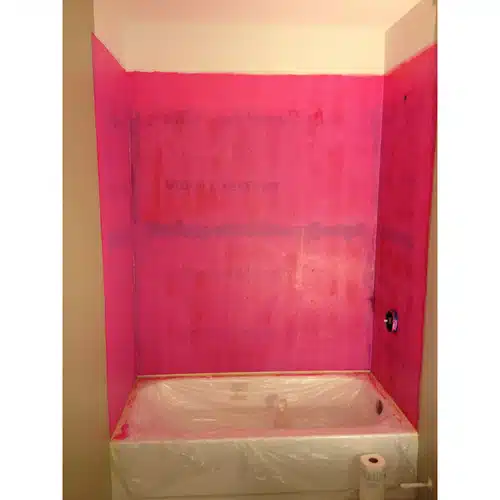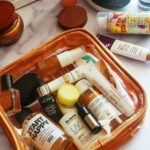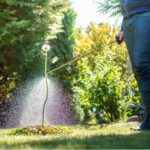Waterproofing Membranes, There are a lot of products available to contractors and homeowners looking to install waterproofing membranes. Among the most popular are Ardex 8 9 and redgard. But what are the differences between these two products? And which one is better suited for your project? Let’s look at the pros and cons of each product.
Table of Contents
What Is Ardex 8+9?
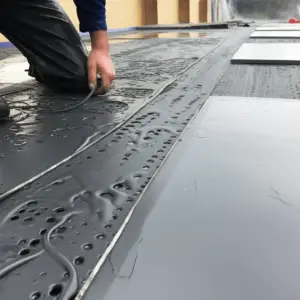
Ardex 8+9 is a two-part, liquid-applied waterproofing membrane that creates an elastic coating that can be applied in both wet and dry conditions. It’s designed for use on plywood, concrete, drywall, and other common surfaces. Additionally, it may be applied over existing waterproofing membranes as long as they are in good condition and clean.
Unlike many of its competitors, Ardex 8+9 can withstand hydrostatic pressure from below or above, making it a great choice for applications like basements and bathrooms.
Advantages:
- Easy to use: No priming, patching, or other preparation is needed before pouring Ardex 8 9. It can be poured over plywood subfloors, concrete, masonry floors, drywall, and gypsum underlayments.
- Quick curing: Ardex 8 9 will dry in approximately 12 hours, so you can get back to work fast.
- Durable: Once fully cured, Ardex 8 9 is extremely strong and durable—it will not shrink or crack like cement-based products can.
- Versatile: Ardex 8 9 works well in both commercial and residential applications, including high-traffic areas like grocery stores and hospitals, as well as residential spaces such as kitchens and bathrooms where water is present on occasion (like during bath time
- Ardex 8 9 can be installed over slightly contaminated or otherwise damaged existing concrete
Disadvantages:
- If you don’t know what you’re doing, this product has no margin for error, making it hard to deal with.
- Does not come pre-mixed, thus it must be mixed before applying, which requires extra time before starting your job (but shouldn’t take more than 15 minutes).
- Cracking is usually a worry when installing this overlayment over an existing floor. Cracks must be repaired before installation and monitored for movement afterward.
- When applying this product directly to concrete, Ardex 8 9 Bonding Agent must be applied beforehand to assure adherence.
- Waterproofing Membranes plan to install radiant heat systems later, it’s not suggested because it may crack when heated.
What Is Redgard?
Redgard is a water-based, paintable membrane that cures to form a thick, seamless, waterproof barrier to protect against moisture. Its composition includes acrylic resin that adds flexibility, durability, and resistance to wear. Redgard can be used for cracks in concrete floors and walls, as well as for tile settings and as a barrier waterproofing membrane for foundations and other structures.
Redgard was first introduced in 2009 when Custom Building Products launched their new line of waterproofing products. Before the introduction of Redgard, Custom Building Products already had a strong lineup of waterproofing products. Redgard quickly became one of their most popular products by providing an easy-to-use solution for waterproofing showers, and tub surrounds.
Pros:
-It protects against moisture, meaning that it keeps water from seeping through cracks and causing damage.
-Redgard protects from mold and mildew. Redgard is fast-drying, and mold thrives in damp environments. So when you’re done applying Redgard, there’s not much chance of mold or mildew developing inside your walls where it’s applied.
-It can be used on both interior and exterior surfaces.
– Redgard is simple to use. It’s one of those products that you just have to unroll and spread. You don’t have to worry about mixing it with other products or having to apply multiple coats.
– It only requires one coat of application, which will save you time and money.
– Redgard seals well. Many customers have said that their leaks were gone for good after using this product. This means that Redgard is not only sealing the small cracks that are visible now but also any future ones that will pop up down the line.
-Redgard is also flexible, which means that it will move with the surface of whatever you’re applying it to and won’t crack or peel off easily over time.
Cons:
– The product has a strong odor and should be used in a well-ventilated area with the appropriate PPE.
– It tends to dry out quickly, so you need to work fast.
– When applying Redgard, it’s important to use the proper roller cover and observe the recommended thickness for best results.
– Redgard is not meant for certain applications, such as over wood or wood-based products.
What’s The Difference Between Ardex 8 9 and Redgard?
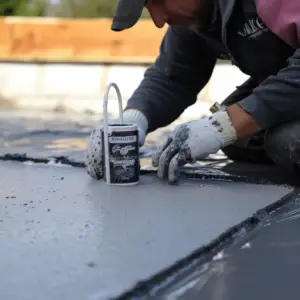
Drying Time:
This is where Ardex 8+9 shines over Redgard: its drying time is extremely fast—just 12 hours! That makes it ideal if you’re trying to get your room ready in a hurry. The downside is that this type of sealer doesn’t have any odor-blocking properties, so if you’re expecting your family to sleep in the room overnight, they may experience some discomfort from the odor.
Thickness:
Ardex 8+9 is intended to be applied at a thickness of 3/16″ or greater, while RedGard can be applied in layers as thin as 1/8″. If your project calls for a thicker layer—for example, if you’re installing tile on a floor where there will be heavy foot traffic—Ardex is probably your best choice.
On the other hand, if you’re working with an uneven surface that won’t admit a thick layer, you’ll want to use RedGard instead.
Cost:
Ardex 8+9 is a two-part epoxy that you mix together before applying. It’s very affordable—two gallons of it costs less than $100 but will cover up to 100 square feet. Redgard, on the other hand, is a pre-mixed sealant that can be bought in gallon containers for about $30 each.
